Synthetic Diamonds: Are They The Next Generation Gemstones?

“Diamonds are forever”. This phrase was famously coined by DeBeers and had become a symbol of enduring love in popular culture. In fact, the marketing campaign to promote naturally mined diamonds in the 1940s was so successful that it inspired books, films and songs about diamonds.
Though recently, the natural diamond industry has come under threat due to governmental regulations and technological breakthroughs in the manufacturing of synthetic diamonds.
In this article, we will take a comprehensive look at what synthetic diamonds are and what are the changes that they might bring to the jewelry industry…
What Are Synthetic Diamonds And How Are They Produced?
Synthetic diamonds have the same chemical and mechanical properties like a natural diamond. In fact, they are made of the same Carbon atoms and possess the same molecular structure. The only difference is that one is man made while the other is created by natural forces deep within the Earth.
Contrary to popular belief, the technology for producing synthetics was not developed in the age of computers. In fact, the first synthetic diamond was created more than a century ago in 1893 by Henri Moissan.
He used an appliance to create diamonds by subjecting small amounts of carbon to high pressure and high temperature (HPHT). In the present day, a very similar process is also used for the commercial production of diamonds for industrial applications.
To see an animated process of how diamonds are made, click this link to see an infographic we made.
Here’s a short list of companies who produce them using High Pressure High Temperature:
New Age Diamonds – http://www.newagediamonds.com
D.NEA – http://d.neadiamonds.com
DNA 2 Diamonds – http://dna2diamonds.com
Besides HPHT, scientists have also developed another method to create gem-quality diamonds using a process known as chemical vapor deposition. In a nutshell, an initial seed diamond is grown by depositing carbon atoms in a low pressure environment.
Here’s a list of companies who produce diamonds using Chemical Vapor Deposition:
Washington Diamonds Corp – http://www.washingtondiamondscorp.com/
INDAB – http://www.indab.com/
Hebei Plasma – http://www.hediamond.cn/en/
Natural Diamonds Pains, Synthetic Diamonds Gains
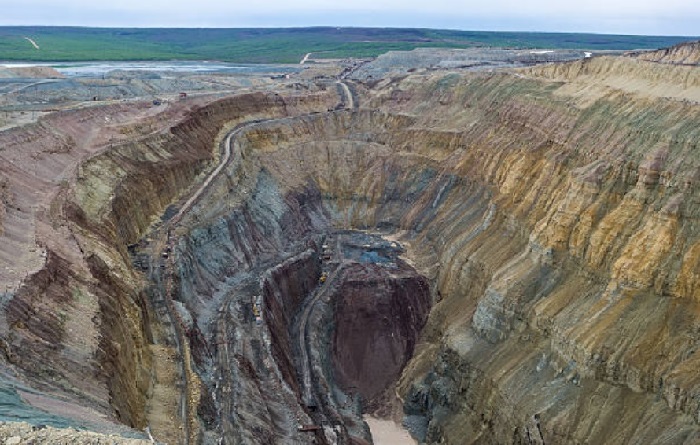
Diamond mining pit in the town of Aykhal, Yakutia, Russia.
Industry experts have been talking about a phenomenon called “peak diamonds” for many decades. The world’s current supply of rough diamonds come largely from existing mines which are operating near the end of their life cycle.
Unless large mines are discovered, the current reserve of rough diamonds is expected to be depleted in 30-50 years time.
Herein also lies the conundrum of mining natural diamonds. It should also be noted that as the mines age and deposits deplete, it becomes more difficult to increase output as the processes get more hazardous and costly.
Also, the exploration of new diamond pipelines is extremely costly and requires huge amounts of capital. Companies who undertake the momentous task of finding new mines need to have very deep pockets as the financial risks taken may not yield economic benefits at the end of the day.
To add to this, the increasing environmental regulations on mining natural diamonds and increased consumer awareness have paved way for synthetic diamonds (lab grown diamonds) to gain greater market penetration.
Where is the Opportunity For Industry Players?
![]()
Demand for ultra high performance in modern electronics manufacturing.
At the time of writing, the demand for synthetic diamonds in the jewelry market is very small. Currently, synthetic diamonds are estimated to make up only 2% out of an $87 billion market. This may change in the future as synthetic diamonds gain acceptance by consumers.
However, the advanced electronics market segment has a different story to tell. Due to their exceptional ability to diffuse heat efficiently, lab-created diamonds are seeing a growing demand in high performance electronics manufacturing where they are used as a major component.
In 2018, the Semiconductor Industry Association posted sales of about $122.7 billion, a 13% increase from 2016’s sales. Against this backdrop of growing demand, there’s a lot of economic potentials for synthetic diamonds to be used in smart technologies such as virtual reality and artificial intelligence.
If you think about it, almost every single modern day gadget is comprised of electronics and semiconductor chips. From mobile phones, cars to coffee makers, there is an unyielding drive towards better performance and miniaturization of components.
As a matter of fact, some of the larger synthetic diamond makers such as Element Six, Scio Diamond Technology Corporation, AOTC, Applied Diamond Inc, D.NEA and Washington Diamonds Corporations are already tapping into the opportunities in the semiconductor market.
Do They Pose a Danger to the Market And the Value of Your Diamonds?
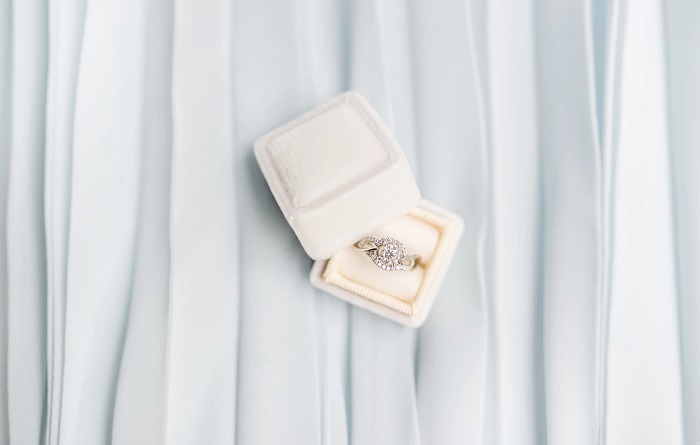
Perhaps one of the biggest reasons why lab-grown diamonds haven’t created a dent in the industry lies in their costs. After all, when it comes to something that is artificially created in relatively high volume, I’m sure most people would associate products like these with the word “cheap”.
However, it isn’t the case with synthetic diamonds and there are 3 main reasons why their prices aren’t low.
First of all, the process of polishing a diamond is pretty much unchanged and utilizes the same techniques that were used a hundred years ago. You see, diamonds are the hardest material on Earth and only a diamond can be used to polish a diamond. Today, this is done in the form of powdered diamond abrasives on a polishing wheel.
More importantly, polishing a diamond is labor intensive and requires highly skilled workers as well as specialized equipment. The costly overheads for processing a rough diamond (whether it is synthetic or natural) is very much the same!
The second reason behind the high prices is a result of the multilayered distribution channels. Each step of the supply/distribution chain involves costs from retailing, marketing, lab grading and taxes to be incurred.
The third reason is that growing diamonds requires state of the art equipment and energy intensive processes. While you can argue that man-made stones remove the cost of mining from the equation, it still requires significant investments and operational costs.
Also, lab grown stones require huge amounts of time for them to grow and in any businesses, time is money. There are also certain limitations in growing diamonds to extremely large sizes with current know-hows. For example, growing a 5 carat stone is very challenging and almost at the limit of current technological capabilities.
What Consumers Need to Know About Artificial Diamonds
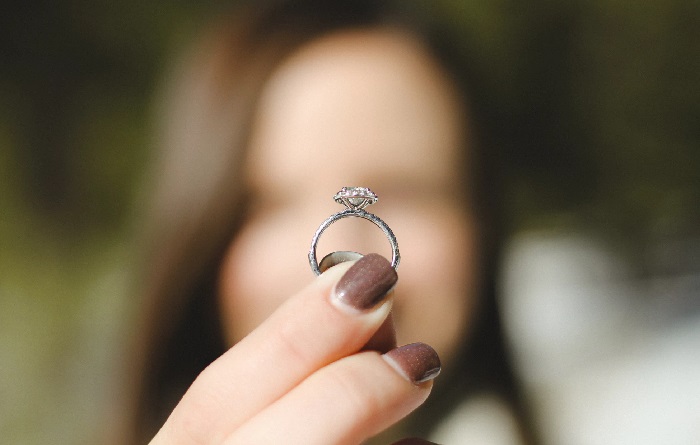
For people who cannot afford a natural diamond, the lower prices offered by synthetics might be an alternative you can consider; especially when it comes to fancy color diamonds with pink or blue hues.
Besides lower prices, another advantage of synthetic diamonds is that they are 100% conflict-free and their origins can be traced back to the labs that make them.
That said, it isn’t all sunshine and rainbows when it comes to synthetic diamonds. They also have their fair share of negative news and problems associated with them as well.
There had been a number of incidents where synthetic diamonds were mixed and sold together with natural diamonds by unethical manufacturers. While the majority of these scams had been exposed, my suspicion is that some inadvertently go undetected.
For consumers who are worried about buying undisclosed synthetic stones, make sure you only buy a diamond that is certified by a reputable gemological lab like GIA or AGS. Having a reliable grading report for your purchase is the best assurance of the diamond’s quality as it is subjected to stringent tests that accurately detect treatments and authenticity.
In Conclusion – What Can We Expect to Happen In the Future?
As the synthetic diamond industry opens up and more players enter the market, you can expect a rapid influx of synthetic diamonds being injected into the market. As basic economics would dictate, consumers can expect a fall in prices as supply grows.
In fact, there are already signs of lower prices when Lightbox (owned by De Beers’s) entered the market in September 2018 with their line of fashion jewelry featuring laboratory-grown diamonds.
Would synthetic diamonds be here to stay or will it be eventually forced out of the market if consumers reject the notion of using them in jewelry? It’s hard to say how it would all pan out with certainty.
Given the current state of affairs, I believe synthetic diamonds are here to stay and will give the natural diamond market a run for its money. In my opinion, it will take at least a decade before synthetic diamonds gain wide-spread acceptance and that’s where things will reach an equilibrium where both natural and synthetic diamonds will co-exist.
Related Articles
Leave A Comment


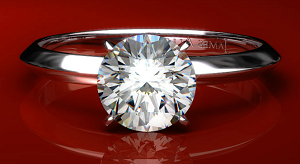
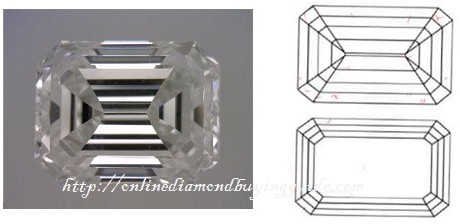
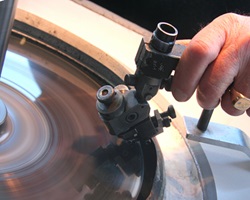









14 Comments
Can an expert distinguish synthetic from natural?
Can a consumer distinguish them?
What do you think about synthetic colored diamonds and the impact on diamond investments in the natural market?
These answers would complete your already great article.
regards
john
Without proper equipment, it would be extremely hard for an expert to tell a synthetic from a natural one. And obviously for a consumer, it’s even harder to do so. If you are worried about buying undisclosed synthetic stones, make sure you only buy a diamond that is certified by a reputable gemological lab like GIA or AGS.
It’s as simple as that. Grading reports are your best assurance because every diamond is subjected to stringent tests which can accurately detect treatments and authenticity.
For people who cannot afford a natural diamond, the lower prices of synthetics might be viable options to explore; especially if you are considering to buy a fancy colored stone. Besides lower prices, consumers of synthetic diamonds can be assured that their purchase is 100% conflict-free since they originate from a lab.
On the last note, until the public’s mindset of purchasing the “real stuff” for someone they love is shifted, you won’t see the demand or value of a natural diamond diminishing in near future.
Wouldn’t synthetic diamonds, especially those produced by the low-pressure process, be free of inclusions? For that matter, wouldn’t they be colorless also? Just as there’s nothing special about Canadian diamonds, isn’t it also true that there’s nothing inherently inferior about a synthetic diamond? What’s more, one might suspect that it’s possible to “dope” the process (similar to a depositing a semiconductor substrate) and thereby produce fancy colored synthetic diamonds…
There are microscopic inclusions due to the material used. For colorless CVD diamonds, the newer technology has been able to create those as well. By and large, color in diamonds is caused by elemental impurities (e.g. nitrogen causes yellowishness). And you are right about Canadian diamonds. There’s nothing intrinsically different from those found in Africa, Australia or other parts of the world. What separates them is marketing.
Paul, can you recommend a synthetic diamond low pressure producer who is reputable. I would like to inquire about a synthetic stone. Also, what are Nexus diamonds? Thank you. I love the articles and information you provide.
Brilliant Earth is the largest vendor of man made diamonds and they are certainly reputable.
=> https://beyond4cs.com/lab-created-diamonds/
My husband recently died and I have been exploring the idea of having his remains synthesized into a diamond. I’ve done research and looked at a few companies and found that there was conflicting information which I was hoping you might be able to clear up.
I began comparing two companies who both have a strong presence on the web, Remembrance Diamonds and Lonité.
Remembrance Diamonds purports that the diamond resulting from cremation remains would be blue owing to the presence of boron. They believe that the diamond should not be altered and therefore they only offer this result. They are very transparent and allow people to actually bring the ashes to their lab in Switzerland.
Lonité, as well as several other companies, state that the unaltered result would be yellow. Yellow is the least expensive by several thousand dollars. They do offer other colors but it would require more processing i.e. the removal of nitrogen to produce blue, as well as the removal of boron to produce white. It’s not clear where Lonité’s lab is, but they show an office in Switzerland. (One of the other companies states on their website that they will not disclose the location of their lab.)
I found an article that broke down the chemical composition of cremated remains. It stated that the four major elements, nitrogen, hydrogen, carbon and oxygen, evaporate at cremation temperatures which are between 1400 and 1700 degrees Fahrenheit. Bone alters as the temperature climbs and ultimately becomes tricalcium phosphate. Some surviving trace minerals will convert to carbonates, which is where I’m guessing all of the companies source the carbon. It doesn’t make mention of boron, but through my research I’ve found that boron has a boiling point of over 7000 degrees Fahrenheit so that might explain why it survives the cremation process.
Everything I read suggests that nitrogen does not exist in cremation remains which supports Remembrance Diamonds’ position. I had a long conversation with a local representative of this company, he consulted his technician at their lab Algordanza in Switzerland and confirmed that there is no nitrogen and suggested that nitrogen entered the process with the other companies by simple exposure to air, something that their lab removed.
When I asked Lonité about this they disagreed and said there was nitrogen in the cremation remains because the body was made up of more than 3% nitrogen. I found this argument to be ridiculous because the body is more than 50% water but hydrogen and oxygen do not exist in cremated remains, they evaporate. I wrote this back to them and they said that the nitrogen in the cremated remains was in combination with other elements, part of DNA. Not being a scientist or knowing much about this I am getting to the point where I can no longer argue though I’ve read that there is no DNA in cremated remains and why you cannot identify a person from them.
I found an interesting article written in 2007 by Jeffrey Post for smithsonian.com where he mentioned that the companies synthesizing diamonds were focusing on yellow diamonds and I wondered if there was a reason for that and if that might explain why several of these companies offer this color, that it’s more to do with their process than the actual content of the remains.
Sorry for the long email. I’d appreciate any insight into this you can give me as it’s very important to me.
With thanks in advance.
I don’t have experience in both companies and I can’t tell you much beyond what you already know about their processes.
In fact, using cremated remains for synthetic diamonds is also something that I have very limited technical knowledge about. Their specific processes and recipes are probably different from the commercial lab grown diamonds.
.
From a scientific point of view and my limited knowledge of chemistry, the boron doesn’t seem to originate from remains but rather from the chemical processes itself. That’s based on my understanding of the commercial synthetic diamond processes.
My stand would be closer to Remembrance Diamonds but I suspect the nitrogen probably comes from BOTH the processing as well as minute trace nitrogen composites in the remains. (though probably not from DNA itself).
Every little trace presence of nitrogen does cause the diamond to turn yellow.
I’m sorry I can’t be of more help but I want to be upfront about my limited knowledge in this sector of the industry.
Hi Paul,
I have learned so much from your articles. Thank you for sharing your research, expertise and experiences.
My husband and I are in the process of changing my current engagement ring diamond (mined) to a lab grown diamond.
I have been working with Brilliant Earth and a few other local vendors. It looks like the majority of LG diamonds are IGI graded, and done GCAL. The inventory is pretty slim for >2 carat as well.
I have been using your ideal proportions. Just saw a diamond at a store that appeared to be optically beautiful and symmetrical. However, the crown angle falls just outside of your ideal proportions (36 degrees). Because of this, the HCA score is 5.2.
In real life (daylight) it looked beautiful. I am very conflicted, but have to make a decision soon. The jeweler agreed to sending it to GIA for independent analysis and will offer 100% refund if I am not satisfied with the diamond based on the GIA report.
Before I decide to go through the process, can you please take a look at the grading report and let me know what you think?
https://igi.org/verify.php?r=LG350871025
Thank you in advance.
In order for me to give you a correct assessment of the diamond, I would need tangible data. Get the ASET/Idealscope or at least a properly taken video of the diamond in neutral lighting and I can tell you more about the IGI diamond. Otherwise, I recommend shopping at Brilliant Earth and using the video listings they have to pick out a well cut stone. It’s easier that way and you get a risk-free purchase as well.
Hi Paul,
Thank you for the quick response. The frustrating thing about IGI reports are that there is no data on light return and symmetry. What are you general thoughts on 36 degree crown angle, which is a whole degree steeper than your ideal crown angle?
CARAT WEIGHT: 3.00 Carats
COLOR GRADE: G
CLARITY GRADE: VS 1
CUT GRADE: IDEAL
POLISH: EXCELLENT
SYMMETRY: EXCELLENT
Measurements: 9.15 – 9.20 x 5.75 mm
Table Size: 57%
Crown Height: 15.5% – 36°
Pavilion Depth: 43.5% – 41°
Girdle Thickness: MEDIUM (FACETED)
Culet: POINTED
Total Depth: 62.5%
FLUORESCENCE: NONE
COMMENTS: This Chemical Vapor Deposition (CVD) laboratory grown diamond is classified as Type IIa
If data is so scant (you know why? that’s because the store probably doesn’t own the stone on hand nor are they willing to reveal details about the diamond), why do you feel obligated to buy the diamond from a vendor offering mediocre service? The proportions are poor and I’m already going way beyond my comfort zone to look at details. FYI, when I shop and I see mediocre proportions, I won’t even waste my time looking at tangible data knowing from experience that it likely would not be well cut.
There’s no need to bang your head against the wall. The solution is simple: shop elsewhere.
Hi Paul,
I did pass on that particular diamond. The problem with Brilliant Earth stores is that majority of their LG diamonds are IGI graded, with only a few GCAL graded diamonds that have the optical brilliance/symmetry analysis. Unfortunately, Brilliant Earth happens to have the largest selection of LG diamonds in my area.
I am wondering–would a beginner’s ideal-scope (https://datlas.com/ideal-scope-store/beginner-scope/) allow me to evaluate the cut of a diamond (using your guide) under store lighting (ie. not controlled lighting conditions)?
The ASET scope is a better tool to help you see the cut quality and performance of the diamond. Get that instead and you can easily see how well cut the diamond is. The store lighting is perfectly fine for ASET scopes.